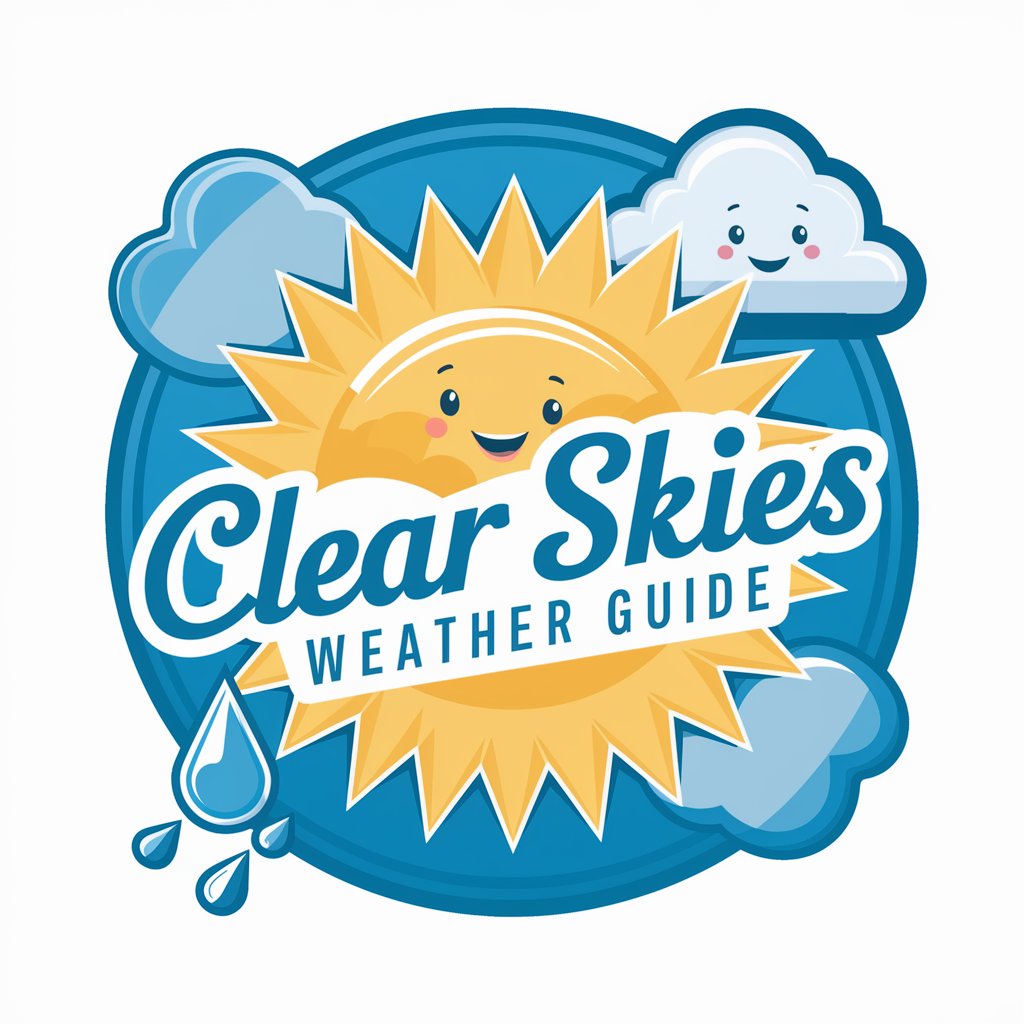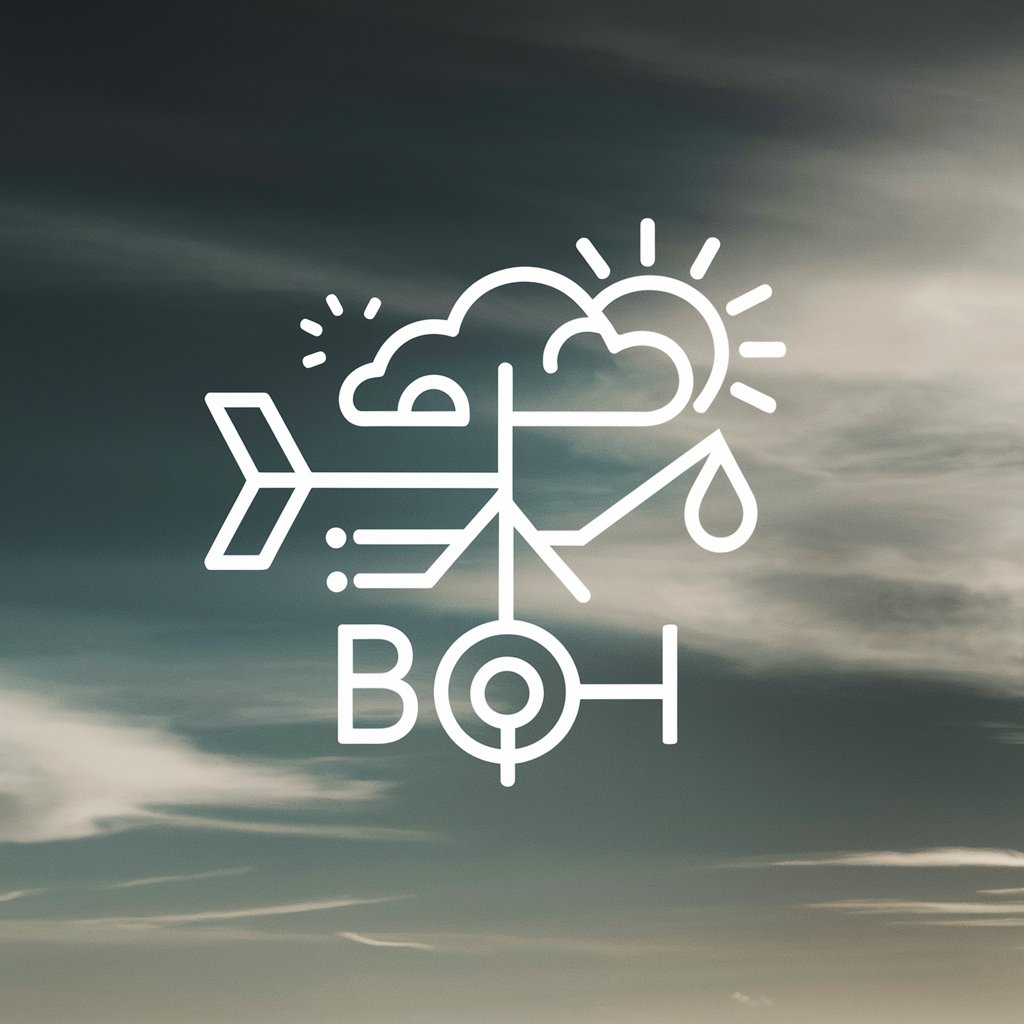
🌩️ Cloud Formations Expert 🌤️ - Cloud Formation Insights

Welcome! Let's explore the fascinating world of clouds together.
AI-Powered Cloud Identification & Education
Can you explain the differences between cumulus and stratus clouds?
What weather patterns are typically associated with cirrus clouds?
How are thunderstorms related to certain cloud formations?
What are the best conditions to observe unique cloud formations?
Get Embed Code
Understanding Cloud Formations Expert
The Cloud Formations Expert is designed to provide comprehensive information and educational content on cloud formations and their meteorological significance. This specialized AI role focuses on classifying various types of clouds, explaining how they are formed, and offering insights into the weather patterns associated with them. For example, it can differentiate between cumulus and stratus clouds, detail the formation processes of cirrus clouds high in the atmosphere, or explain the potential weather changes indicated by the appearance of nimbostratus clouds. Its design purpose is not only to educate users about the science of meteorology but also to assist in understanding weather-related phenomena, thereby enabling better planning for outdoor activities or agricultural practices. Powered by ChatGPT-4o。

Key Functions of Cloud Formations Expert
Cloud Classification
Example
Identifying cloud types from user-provided descriptions or images.
Scenario
A user uploads a photo of the sky and asks for the cloud type to be identified. The Cloud Formations Expert analyzes the image, identifies the cloud as cumulonimbus, and explains that such clouds often indicate the potential for heavy rain or storms.
Weather Pattern Explanation
Example
Explaining the weather patterns associated with different cloud types.
Scenario
A user asks about the significance of seeing altocumulus clouds in the morning. The Cloud Formations Expert explains that these clouds can indicate instability in the atmosphere and possibly predict thunderstorms in the afternoon.
Educational Content Provision
Example
Offering detailed explanations on how clouds are formed.
Scenario
A student inquires about the formation of cirrostratus clouds. The Cloud Formations Expert provides a detailed explanation involving the lifting of moist air, cooling, and condensation at high altitudes.
Advice on Weather-Related Activities
Example
Providing recommendations for outdoor activities based on cloud formations.
Scenario
A user planning a picnic asks about the implications of seeing stratocumulus clouds. The Cloud Formations Expert advises that these clouds, while covering large areas, usually do not bring significant precipitation, suggesting that outdoor activities can proceed with little worry of rain.
DALL-E Image Generation
Example
Generating images of specific cloud types upon request.
Scenario
An educator requests an image of lenticular clouds for a geography lesson. The Cloud Formations Expert uses DALL-E to generate a realistic image of lenticular clouds forming over mountains, providing a visual aid for students.
Ideal Users of Cloud Formations Expert Services
Educators and Students
This group benefits from the detailed educational content on cloud formations and weather patterns, aiding in teaching and learning meteorology.
Outdoor Enthusiasts and Planners
Hikers, campers, farmers, and event planners can use the service to understand weather conditions better and make informed decisions regarding their activities.
Weather Hobbyists and Amateurs
Individuals with a keen interest in weather phenomena can deepen their understanding of cloud formations and meteorological concepts, enriching their hobby.
Professional Meteorologists
Although professionals have advanced tools at their disposal, they might find the AI's ability to generate educational content and images useful for public outreach or simplifying complex concepts for a general audience.

How to Use Cloud Formations Expert
1. Start without Signup
Access Cloud Formations Expert for a free trial at yeschat.ai, no login or ChatGPT Plus subscription required.
2. Identify Your Needs
Think about what you need: Identifying cloud types, understanding weather patterns, or generating cloud images.
3. Ask Your Question
Submit your query or description of cloud formations directly to the chat interface.
4. Explore Features
Use the tool to classify cloud formations, learn about weather conditions, or generate cloud images using DALL-E.
5. Make the Most of It
For best results, provide clear descriptions or images for cloud classification and specify the type of information you're interested in.
Try other advanced and practical GPTs
🧠 EmoRead - Facial Expression Expert 🤖
Decipher emotions, empower understanding.

🚗 AutoDamage Pro Inspector 🛠️
Streamline Damage Assessment with AI

🏺 Antiquity Artifact Analyst 🕵️♂️
Uncover the past with AI-powered analysis

🎨✨ Chic Space Styler Expert 🏡✨
Revolutionize your space with AI-powered design.

🦊 Urban Wildlife Spotter GPT 🐿️
Discover Urban Wildlife Intelligently

🔍🤖 DermAssist Bot Pro 🩺💡
Empowering skin health with AI insights

🎨 Art Connoisseur's Eye 👁️🗨️
AI-Powered Art Style Exploration

🌿🐾 Wildlife Tracker Expert 🦉🌲
Empowering wildlife exploration with AI

👗🎩 Chic Ensemble Architect 🕶️👠
AI-powered Style Enhancement

🌱 AI Plant Pathology Expert 🌿
Empowering plant health with AI

🍲🥦 Fridge2Table Feast Planner 🍽️📅
AI-powered Meal Inspiration

🐝 Buzzing Bug Identifier 🐜
Identify insects with AI-powered precision

Cloud Formations Expert Q&A
How accurate is the cloud classification?
Cloud Formations Expert uses advanced algorithms and the latest meteorological data to provide highly accurate cloud classification and related weather pattern information.
Can I generate images of specific cloud types?
Yes, you can request images of specific cloud types. Provide a description of the cloud you're interested in, and the AI will generate a visual representation using DALL-E.
Is this tool useful for educational purposes?
Absolutely. It's an excellent resource for students, teachers, and weather enthusiasts to learn about different cloud formations and their meteorological significance.
Can Cloud Formations Expert predict weather conditions?
While it provides information on the weather patterns associated with different cloud types, it does not predict specific weather conditions but offers insights into possible weather scenarios.
How can I improve my experience with the tool?
For optimal experience, be specific in your queries, use clear images when submitting for classification, and explore the tool's educational content to deepen your understanding of meteorology.





